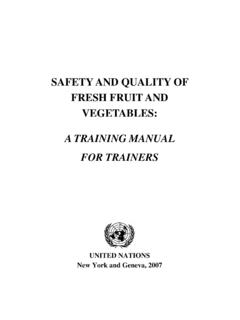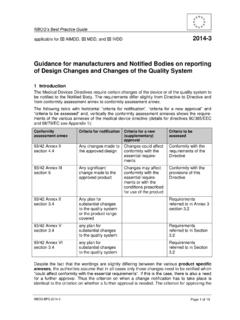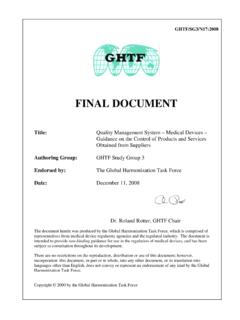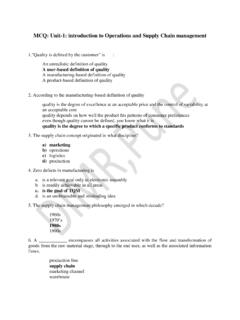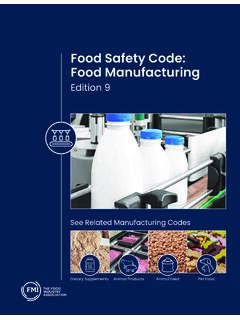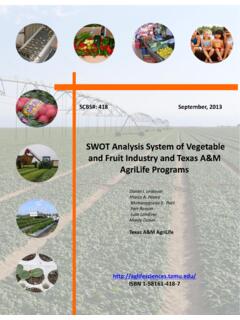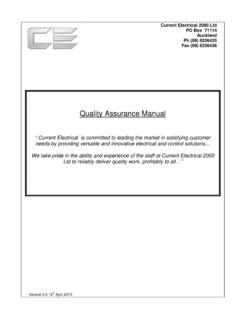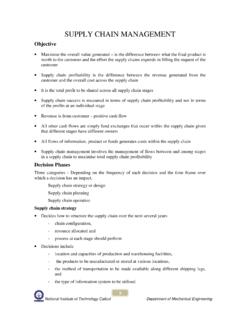Transcription of RETAIL MANAGEMENT 14MBAMM302
1 1 RETAIL MANAGEMENT MBA A LECTURE NOTES ON RETAILING MANAGEMENT DEPARTMENT OF MANAGEMENT STUDIES 2 RETAIL MANAGEMENT MBA UNIT-1 Introduction and Perspectives on Retailing - World of Retailing, RETAIL MANAGEMENT , introduction, meaning, characteristics, emergence of Organizations of retailing - Types of Retailers ( RETAIL Formats) - Multichannel Retailing Customer Buying Behaviour, Historical Perspective, role of retailing, trends in retailing, FDI in RETAIL - Problems of Indian Retailing - Current Scenario UNIT-2 Theories of Retailing Wheel of retailing, The RETAIL Accordion, Melting Pot Theory, Polarization theory Retailing strategy for Setting up RETAIL organization and planning: RETAIL Market Strategy - Financial Strategy - Site & Locations (Size and space allocation, location strategy, factors Affecting the location of RETAIL , RETAIL location Research and Techniques, Objectives of Good store Design.)
2 Human Resource MANAGEMENT , Information Systems and supply chain MANAGEMENT & Logistics. UNIT-3 Store MANAGEMENT and visual merchandising: Store MANAGEMENT : Responsibilities of Store Manager, Store Security, Parking Space Problem at RETAIL Centres, Store Record and Accounting System, Coding System, Material Handling in Stores, MANAGEMENT of Modern retails -Store Layout, design: Types of Layouts, role of Visual Merchandiser, Visual Merchandising Techniques, Controlling Costs and Reducing Inventories Loss, Exteriors, Interiors Customer Service, Planning Merchandise Assortments -Buying systems Buying merchandise and RETAIL Communication Mix 3 RETAIL MANAGEMENT MBA UNIT-4 RETAIL Pricing.
3 Factors influencing RETAIL pricing, RETAIL pricing strategies, RETAIL promotion Strategies Relationship Marketing & International Retailing: MANAGEMENT & Evaluation of Relationships in Retailing, RETAIL Research in Retailing: Importance of Research in Retailing, Trends in RETAIL Research, Areas of RETAIL Research. Customer Audits, Brand MANAGEMENT in retailing, Internationalization of Retailing and Evolution of International Retailing, Motives of International Retailing, International RETAIL Environment Socio-Cultural, Economic, Political, Legal, Technological and issues in international retailing UNIT-5 RETAIL Audit and ethics in Retailing Undertaking an audit, responding to a RETAIL Audit, problems in conducting a RETAIL audit.
4 Ethics in retailing, social responsibility and consumerism 4 RETAIL MANAGEMENT MBA CONTENTS UNIT-NO TITIL NAME 1 Introduction & perspectives on retailing 2 Retailing strategy for setting up RETAIL organisation and planning 3 Store MANAGEMENT and visual merchandising 4 RETAIL pricing 5 Relationship marketing & international retailing 5 RETAIL MANAGEMENT MBA Module 1 Introduction and Perspectives on Retailing World of Retailing: Retailing is a global, high-tech industry that plays a major role in the global economy. About one in five workers is employed by retailers. Increasingly, retailers are selling their products and services through more than one channel such as stores, Internet, and catalogs.
5 Firms selling services to consumers, such as dry cleaning and automobile repairs, are also retailers. RETAIL MANAGEMENT : The various processes which help the customers to procure the desired merchandise from the RETAIL stores for their end use refer to RETAIL MANAGEMENT . RETAIL MANAGEMENT includes all the steps required to bring the customers into the store and fulfil their buying needs. RETAIL MANAGEMENT makes shopping a pleasurable experience and ensures the customers leave the store with a smile. In simpler words, RETAIL MANAGEMENT helps customers shop without any difficulty. What is Retailing? Most common form of doing business It consists of selling merchandise from a permanent location (a RETAIL store) in small quantities directly to the consumers.
6 These consumers may be individual buyers or corporate. Retailer purchases goods or merchandise in bulk from manufacturers directly and then sells in small quantities Shops may be located in residential areas, colony streets, community centers or in modern shopping arcades/ malls. Meaning of Retailing: According to Kotler: Retailing includes all the activities involved in selling goods or services to the final consumers for personal, non business uses. 6 RETAIL MANAGEMENT MBA A process of promoting greater sales and customer satisfaction by gaining a better understanding of the consumers of goods and services produced by a company. Characteristics of Retailing: 1. Direct interaction with customers/end customers.
7 2. Sale volume large in quantities but less in monetary value 3. Customer service plays a vital role 4. Sales promotions are offered at this point only 5. RETAIL outlets are more than any other form of business 6. Location and layout are critical factors in RETAIL business. 7. It offers employment opportunity to all age Types of Retailers: Store Retailing by Store based Strategy Food Retailers 1. Departmental stores. 2. Convenience Store. 3. Full Line Discount. 4. Conventional Supermarket. 5. Specialty Stores 6. Food Based Superstore 7. Off Price Retailer. 8. Combination Store. 9. Variety Store. 10. Super Centres 11. Flea Market. 12. Hypermarket. 13. Factory Outlet. 14. Limited Line Stores.
8 15. Membership Club. 1. Department Store Department stores are large retailers that carry wide breadth and depth of products. They offer more customer service than their general merchandise competitors. Department stores 7 RETAIL MANAGEMENT MBA are named because they are organized by departments such as juniors, men s wear, female wear etc. Each department is act as ministore . Means the each department is allocated the sales space, manager and sales personnel that they pay an attention to the department. IMC programme for each department is different and particular. Department store utilizes various sources for marketing communication. Due to overstoring most of the budget are spending on advertising, couponing and discounts.
9 Unfortunately the use of coupons diminishes profits and creates a situation where consumer does not buy unless they receive some type of discount. 2) Convenience stores: Convenience stores are located in areas that are easily accessible to customers. Convenience store carry limited assortment of products and are housed in small facilities. The major seller in convenience stores is convenience goods and non alcoholic beverages. The strategy of convenience stores employ is fast shopping, consumer can go into a convenience stores pick out what they want, and check out relatively short time. Due to the high sales, convenience store receives products almost daily.
10 Because convenience store don t have the luxury of high volume purchase. 3) Full line Discount Stores It conveys the image of a high volume, low cost, fast turnover outlet selling a broad merchandise assortment for less than conventional prices. It is more to carry the range of products line expected at department stores, including consumer electronics, furniture and appliances. There is also greater emphasis on such items as auto accessories, gardening equipment, and house wares. Customer services are not provided within stores but at centralized area. Products are sold via self service. Less fashion sensitive merchandise is carried.

